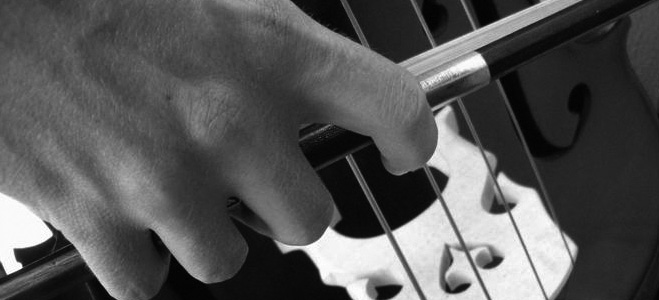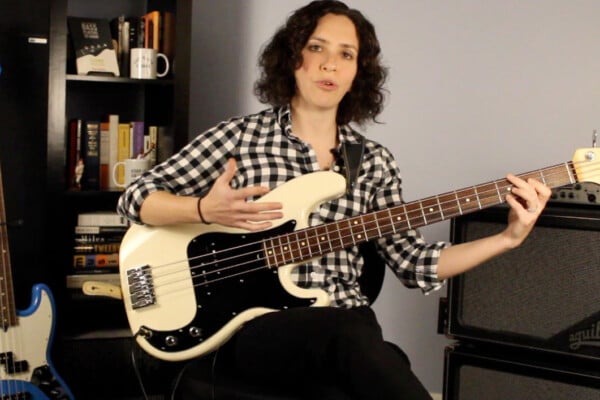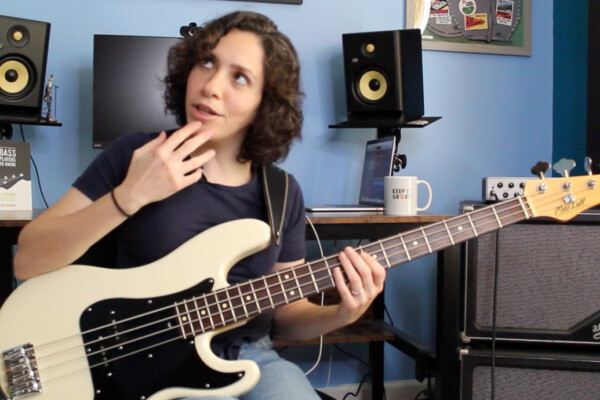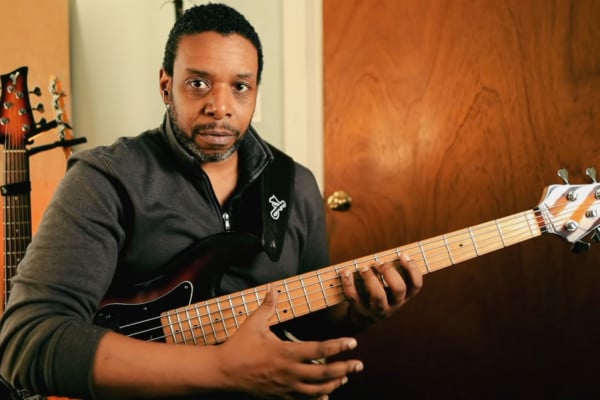Maximizing Resonance with the Bow

If you play the bass long enough you’ll hear someone talking about making a “resonant” sound. When we are searching for a resonant sound we are attempting to create an unrestricted sound, one with some “depth,” where the strings and the bass itself both vibrate freely.
Obviously, some basses vibrate more easily than others. These tend to be the more sought after instruments. (read here: more expensive). However, basses don’t play themselves, and no matter the general quality of our instrument we can do much to maximize resonance, especially when playing with the bow.
From a practical point of view, what we want to do is set the string in motion in such a way that the string vibrates fairly widely, regardless of the dynamic. We want to set the string in motion so that we maximize the envelope made by the vibrating string, avoiding any restriction of this vibration through our use of the bow.
Here’s an exercise to help illustrate what I am speaking of:
Place the bow on the D string approximately half-way between the end of the fingerboard and the bridge.
- This is will be our contact point for this exercise.
- Keep this contact point consistent for this exercise. (Ultimately you should try this at several different contact points).
Play the open D continuously, using full bows (heel to tip) at about a mezzo-forte volume.
- (Ultimately you should try this at all volumes, searching for a resonant sound from pianissimo to fortissimo)
Continue playing repeated, full bows (up bow, then down bow, etc.)
- Watch the string at approximately the halfway point (i.e. around where 12th fret would be, if we had frets).
While keeping the contact point and volume consistent, experiment with weight and speed.
- Aim to maximize the width of the vibrating string at the half-way point
- Try less weight and more weight. If the tone is glassy, try more weight. If it is strained, try less. Do it in increments.
- Try a slower bow and a faster bow. If the tone is glassy, try a slower bow. If the tone is strained, try a faster bow. Do it in increments.
- Experiment and watch the width of the string vibration change as you do so. Be sure to keep the dynamic level consistent, however. Take some time and really experiment with weight and speed, all the while listening closely to the quality of your tone. Mix it up.
Continue to experiment in this fashion until you believe you have set the string vibrating as widely as you can, while keeping the dynamic at mezzo-forte.
- You can set the string vibrating very widely, for instance, if you just play louder. What we are searching for, however, if the most resonant tone at our chosen dynamic. In this case, mezzo-forte.
Once you are setting the string into motion and it is vibrating freely you should be able to hear a depth to your tone, beyond the sound of the sting. This “depth” is the resonance of the bass. Some people describe it as a “hum.” Both the string and the bass are vibrating more fully when you hear this hum. The more depth you have, the more attractive your sound will generally be, and the more it will “carry” to the back of a concert hall or other venue.
Ultimately, the exact amount of weight and speed you will need to use will vary dependent upon your contact point, volume, speed of the notes, etc. What we are trying to do with this experiment, however, is to open up our ears and find the maximum resonance of our particular instrument using full bows on an open string.
No matter our level of musicianship or instrumental skill, it does us all some good to spend some time daily on tone production. Aiming for a resonant sound at all times reaps great tonal benefits. One might start the day with open strings, then some slow scales. All the while, try to maximize resonance by allowing the string to vibrate freely and listen for the “depth” in the tone.
Once we have attuned our ears and our body to this sound, we can put some attention to it at all times, whatever we are playing, to create our most resonant bass sound with the bow.
Dr. Donovan Stokes is on the faculty of Shenandoah University-Conservatory. Visit him online at www.donovanstokes.com and check out the Bass Coalition at www.basscoalition.com.




A good exercise for bow sound is to “divide” the bow into thirds and practice getting a good sound from each section of the bow. The first section would be the 1/3 of the bow from the tip to the middle, the second “third” being the middle third of the bow’s length, and lastly, the third starting from the frog and extending towards the middle.
The purpose of this exercise it to develop complete bow control regardless of where you start. The type of control needed at the tip playing softly is completely different from playing softly at the frog, and you need to be able to do both.
Another important concept is to think about playing short notes starting off the string that continue to resonate even after the bow has left the string. Lots of players kill their own sound by not allowing the string to vibrate to its fullest. It’s like a guitarist strumming a chord with their right palm muting the strings.
Finally, resonance happens in the left hand as well. On string bass you don’t have to play with a death grip on the neck to produce a good sound, but you do have to be able to hold the string down so that it vibrates freely when plucked. If you can’t do that, the best bow technique in the world will be wasted.